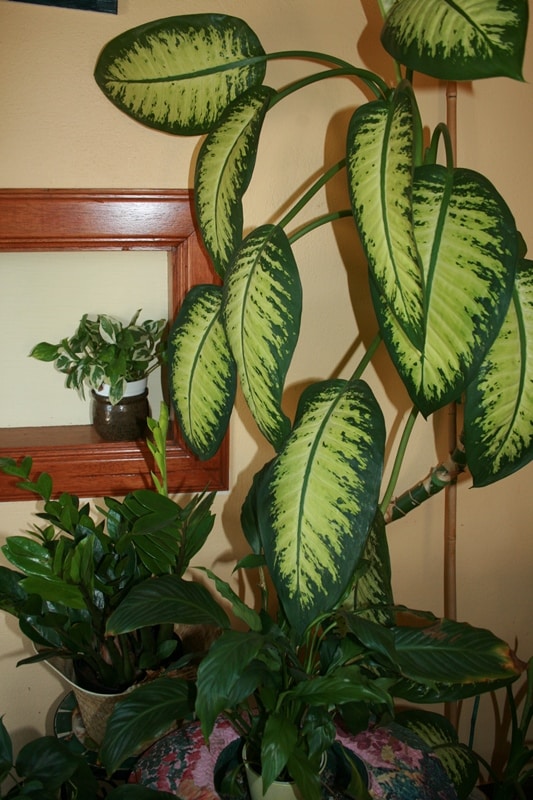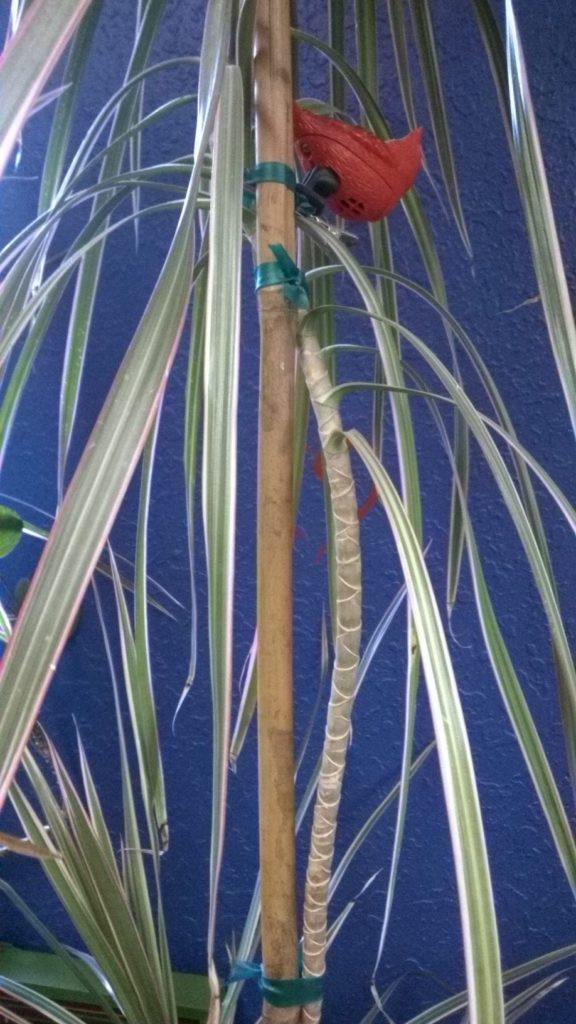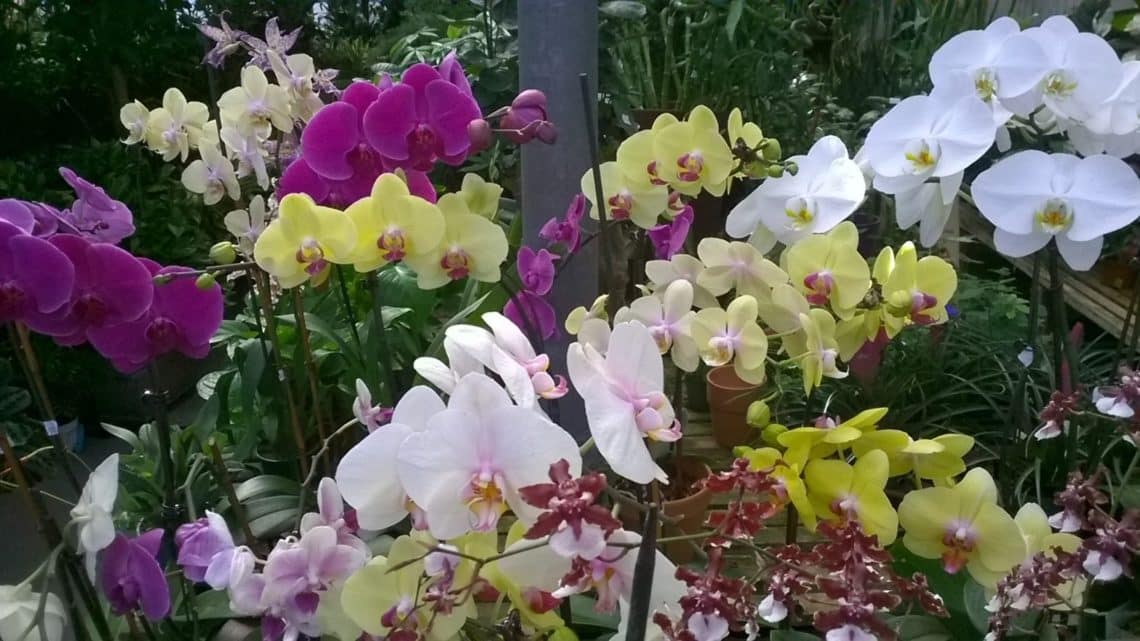At some point, your houseplant friends need a little support–and like friends, some need more support than others. Many indoor plants grow well without any staking, but there are those that require something to cling to in order to grow upright or in a certain direction.
Reasons to support your houseplants vary. The most common are to keep plants upright, so they don’t fall over and uproot, and to make them grow in a certain direction—for instance straight up or along a wall. How much support a houseplant requires often depends on how that plant grows in its natural habitat. For instance, vines will often require more support and training than plants that naturally grow upright in the wild.
Keep these tips in mind when staking your houseplants.
To stake a plant so that it stays upright, insert the stake in the soil within an inch or two from the base of the plant. Secure the stake to the stem with green garden tape, which stretches and allows for growth.
 (Julie Bawden-Davis)
(Julie Bawden-Davis)To secure a plant that trails or climbs, use a trellis or wind the plant up the stake and secure with green garden tape. Or encourage a vine to climb across a wall by installing strategically placed nails or hooks onto which you secure the plant. Plants that do well with such training include pothos, hoya, English ivy and arrowhead plant.
Certain plants, such as orchids and split-leaf philodendron, have what are known as aerial roots. These are roots that grow from the base of the plant and in the wild absorb moisture and nutrients. In the home environment, it’s best to train these aerial roots to grow up a moss-covered pole, which you can make or buy at the nursery or home and garden center. When using a moss-covered pole, keep it moist by misting the pole daily with water.
 (Julie Bawden-Davis )
(Julie Bawden-Davis )A wide variety of stakes and trellises exist. You’ll find them made from various materials, including bamboo, wood, metal, wire and plastic, and they come in many styles, colors, shapes and sizes. You can even make your own stakes from branches and twigs from the garden. If you wish to shape them, do so when they are still green.
Minimize root damage when installing stakes and supports by inserting them carefully into the soil. Avoid poking around in the root zone. Try to choose the best location initially. When you insert the stake, immediately secure the plant to the stake with green garden tape. Tie the stake to the plant in two to three locations to minimize breakage. Keep in mind that the stake will have to be repositioned as the plant grows.
Julie Bawden-Davis is a garden writer and master gardener, who since 1985 has written for publications such as Organic Gardening, Wildflower, Better Homes and Gardens and The Los Angeles Times. She is the author of seven books, including Reader’s Digest Flower Gardening, Fairy Gardening, The Strawberry Story, and Indoor Gardening the Organic Way, and is the founder of HealthyHouseplants.com.

